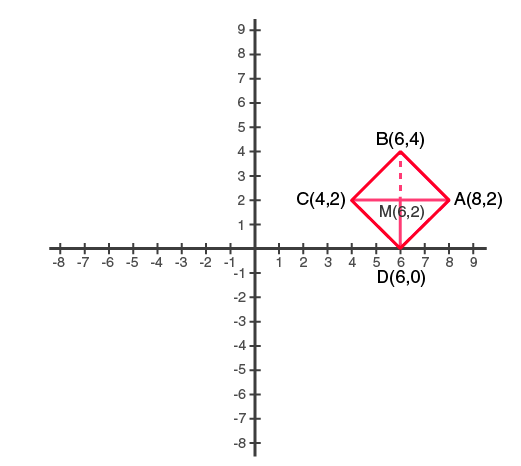Solution:-

Steps for marking the points on graph:
1. As per the given data plot the points ![]() and
and ![]() on the graph.
on the graph.
2. Then plot point M whose vertices are ![]() and
and ![]() .
.
3. Condition given the question, taking P as the point of symmetry.
4. So, point symmetric to ![]() in the line
in the line ![]() is
is ![]()
5. Point symmetric to ![]() in the line
in the line ![]() is
is ![]()
6. Now join AP, PC, BP and PD
By using the distance formula,
![]()
![]()
![]()
![]()
Then,
![]()
![]()
![]()
![]()
So, from Pythagoras theorem
![]()
![]()
![]()
![]()
Therefore, ![]()
Hence, it is clear that AB = BC = CD = DA, AC and BD bisect each other at right angles, so ABCD is a square.
